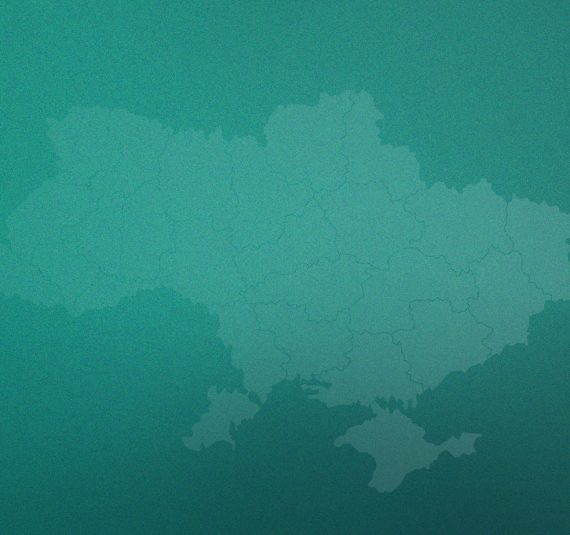Lviv 2025: How the City will Change in the Next Few Years
The 765-year old city of Lviv has traditionally been known for its cobblestone streets, renaissance architecture and baroque churches. However, in the past few years, the city has been slowly embracing a more modern approach to architecture, urban planning, and mobility. Lviv has set itself ambitious goals for 2021 and beyond, and today, we’ll learn more about some of the most awaited infrastructure projects that will change the landscape of our city very soon.
When it comes to successful urban projects, Lviv is often referred to as a leader among other Ukrainian cities. In 2020, the second stage of Dvirtseva square reconstruction was completed with high priority given to public transport and the comfort of pedestrians. The square is located right next to the railway station, therefore, arranging comfortable bus and tram stops for both residents and tourists to commute to the city center conveniently was one of the prime concerns. By 2024, Lviv has committed itself to an impressive goal: making it possible to get to the city center from any part of the city in 24 minutes by public transport. The city is definitely hungry for systemic changes in infrastructure, improvements in public transportation and modern architecture. Let’s see what kind of projects will emerge in Lviv in the near future.
City Archive
In 2017, the best project for the new building of the Lviv City Archive was chosen at the All-Ukrainian Open Architectural Competition. The creative studio KUDIN architects from Kyiv was awarded 1st prize. The winning project’s interior will be split between visitor space with coworking, conference hall, exhibition hall, cafe and the archive maintenance zone. The project will also entail active use of the building’s green roof as a cinema. The total area of the new city archive is 4,03 hectares, the building will consist of 5 floors and a rooftop. Due to the hydrogeological situation and complex utility systems, the height of the building had to be raised, which forced slight changes in the design. The new design is almost finished and will oversee expert evaluation before the construction is allowed.
Where: Intersection of Truskavetska and Pulyuya St.
Lem Station
Lem Station is a revitalization project of an old tram depot, named after the sci-fi writer Stanislaw Lem, who was born in Lviv. The project is led by a group of Lviv entrepreneurs as well as international investors. The first stage of the revitalization has already started and is planned to be finished by autumn of 2021. In a few years, Lem Station is supposed to become a new hub of creativity and innovation in Lviv. Lem Station will include a startup incubator, coworking space, maker space, art gallery, event hall, children’s development center, food court and other spaces for study and recreation. The project leaders say that one of their key goals is preserving the authentic elements from the original building (staircases, gates, windows, etc.).
Where: Vitovskoho St. 57
Sykhiv Sports Palace
Sykhiv Sports Palace is another project designed by KUDIN architects. The total area of the project will be 14,6 thousand square meters. The complex will consist of four halls for volleyball, basketball, handball, and rugby. The hall will be able to host competitions, for example, the volleyball hall can accommodate 2,5 thousand spectators. The highlight of the project will be its roof which will simulate a mountain slope; it is planned to be used for skiing and sledding. According to Lviv City Mayor Andriy Sadovyi, the city will use financial aid from the state as well as grant funds so that the project is completed by the end of 2021.
Where: Chervonoyi Kalyny Avenue
Art School
In October 2020, the jury of the All-Ukrainian Open Architectural Competition chose the best design proposal for the construction of an art school with a concert hall. The Chief Architect of Lviv, emphasized that the project will take into account all the requirements of the surrounding historical environment. The project will make active use of the plot plan with different functional areas not only for students but also for neighboring residential communities. In addition to the art school and concert hall, the project aims to create a completely new public space that can be used for various festivals, performances, etc. in the future. The designed space will provide inclusive access for visitors.
Where: Lychakivska St., 105
Jam Factory Art Center
Jam Factory Art Center is a revitalization project of a former jam factory that will open as a multidisciplinary art center with additional premises for theatre plays, exhibitions, events as well as offices, restaurants and open public space. The history of the neo-Gothic building goes back to 1872, it survived multiple owners and two World Wars. Jam Factory Art Center will focus on promoting various art forms, from contemporary visual art to new music, cinema and education. The revitalization project started in October 2019, with plans to complete renovation by spring 2022. The center was founded by Harald Binder, a Swiss-born historian and entrepreneur from Vienna, who had also founded the Center for Urban History of East Central Europe in Lviv.
Where: Bohdana Khmelytskoho St., 124
Innovation District IT Park
Innovation District IT Park is one of the biggest infrastructure projects in Lviv. The project was launched back in 2018 by the consortium of partners of Lviv IT Cluster and Galereja Centre, and investment companies Brookfield & Partners and Horizon Capital. Innovation IT Park will become a center for the development of the tech industry in Lviv, aiming to support business and science environments. Innovation District IT Park will include modern offices for more than 10,000 tech professionals, innovative computer lab complex for technical students, multifunctional center, green zone with a park, etc.
Where: Ivana Chmoly St., 1
Looking five years into the future, there are many ideas on how to make Lviv a more comfortable city. One of them is the idea of building a cable car road that will connect Pidzamche district and the High Castle. Lviv Urban Planning Department is currently discussing such a project with municipal authorities from Koblenz, Germany and Salzburg, Austria. Both these cities implemented cable car projects at UNESCO heritage sites, therefore, learning from their experience is definitely valuable. The cable car road in Lviv won’t be strictly a tourist attraction, the main goal is to make Pidzamche more accessible, connecting the south and north of the city. Another project Lviv’s residents are looking forward to is the restoration of the Pelchynskyi pond at the intersection of Vitovskoho, Sakharova and Bolharska streets. This project will not only help to create a new public space but also unload and reorganize the traffic in such a busy area.
Infrastructure preferences are changing but Lviv tries to keep up with the times, adopting more modern and comprehensive practices. Recycling plant, crematorium, quality office spaces and more public areas – these are just a few of the high-priority projects Lviv should see in the next couple of years.



